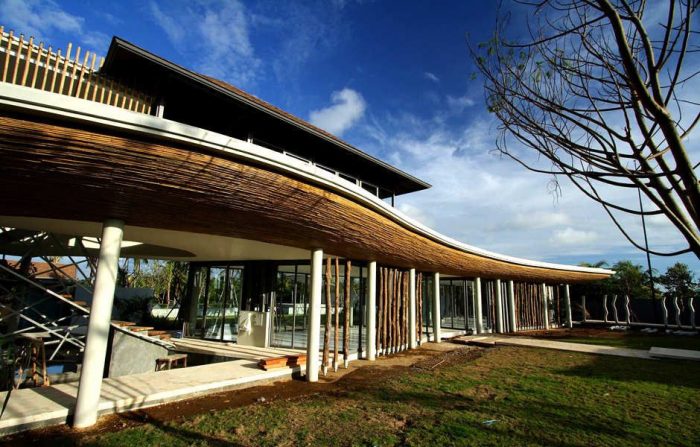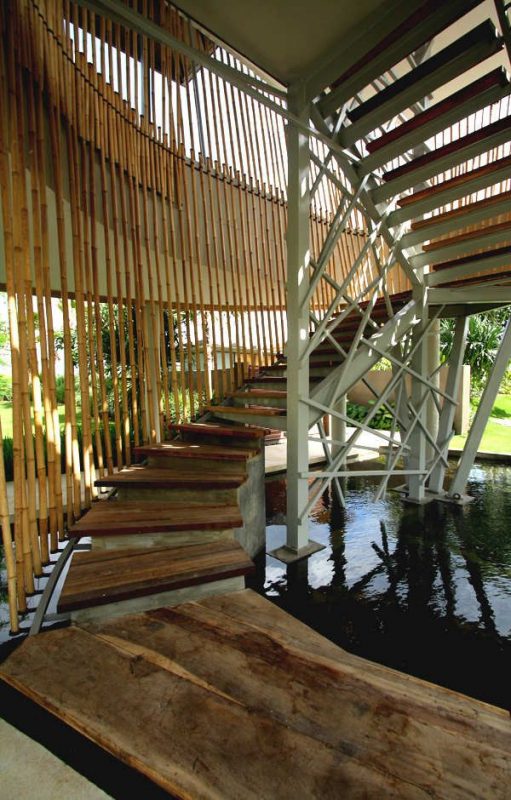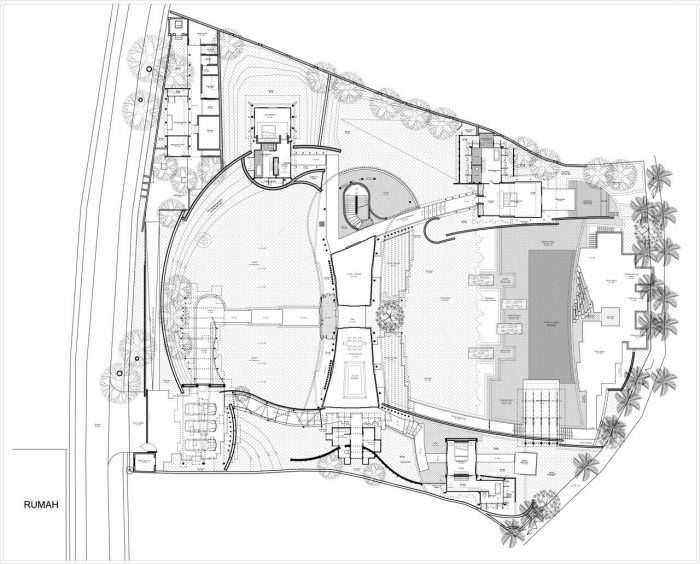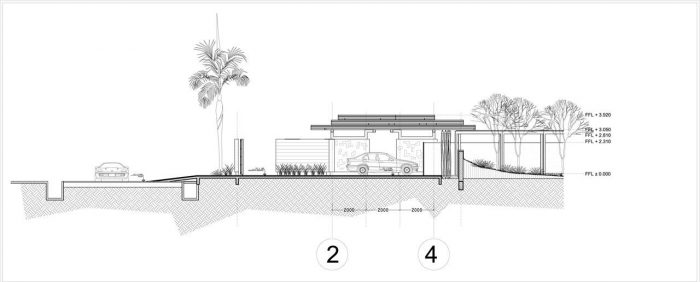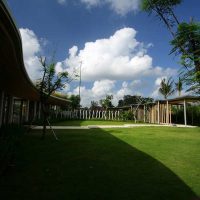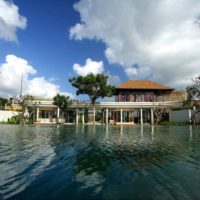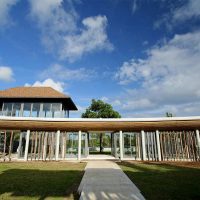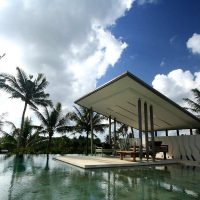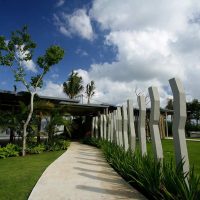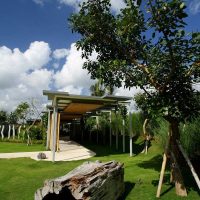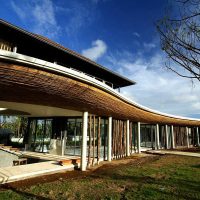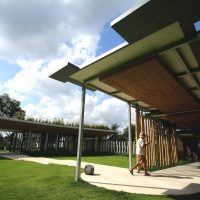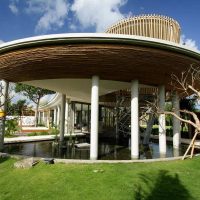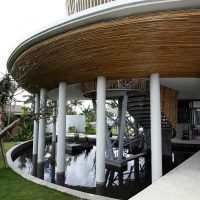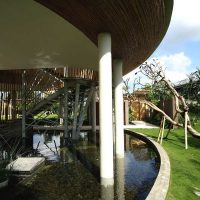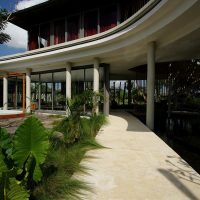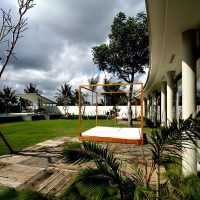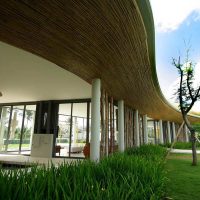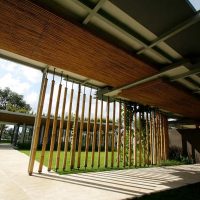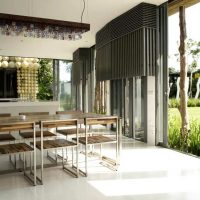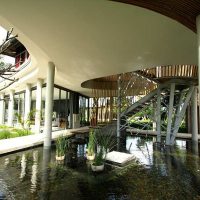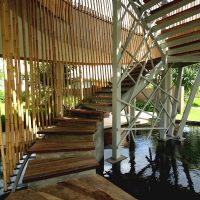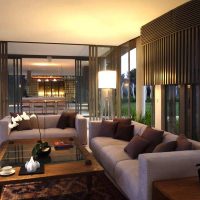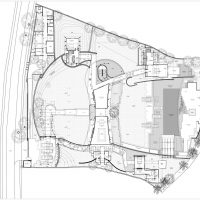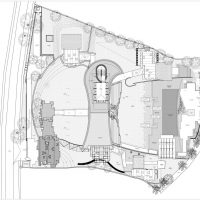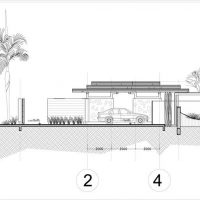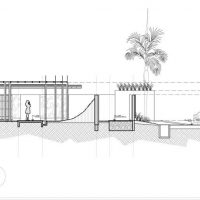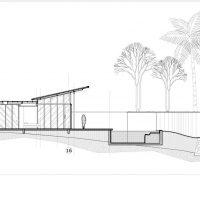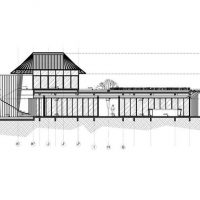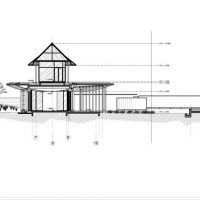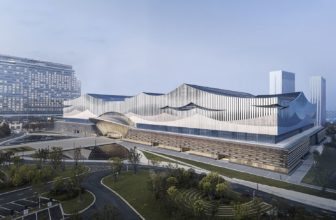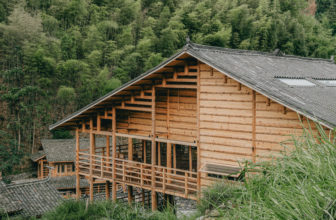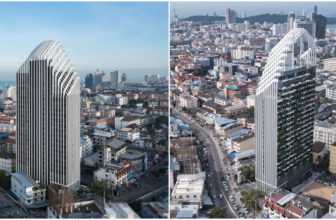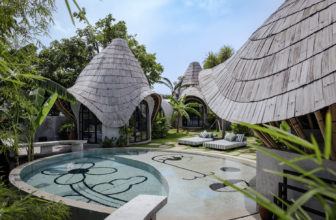Yoka Sara’s artistic flair is immediately apparent in the Kayu Aga House designed for Italian businessman Alberto Agazzi. The reasoning behind the plan form of the house is initially elusive. The compound essentially consists of a carport and three orthogonal sleeping pavilions located in the four corners of the site. Occupying the center is a two-story pavilion containing the principal living/dining facilities, with an elevated studio at first floor and a verdant roof garden. The central pavilion has a delightful oval staircase with bamboo balustrade rising from an elliptical pond. Each of the sleeping pavilions has a private garden court with a terrace and an outdoor bathroom, and the routes to the center are differently choreographed.
There appears to be underlying rationale derived from a traditional Balinese compound, where family activities are assigned to different pavilions, but any resemblance to the traditional form is subverted by what at first sees a random arrangement of sinuously curved walls that serve to unify the various elements but simultaneously to separate the activities.
Yoka Sara’s conceptual sketches provide insight into the design process and clarify the purpose of the walls. The site is divided into four layers from west to east, expressed as slightly radiuses line, the first layer being a physical barrier to the noise from the road that runs along the western boundary. The barrier takes the form of a high wall and the service functions of the house tucked into the northeast corner of the site. The second layer is the “west lawn” that distances the main pavilion at the center of the plan from the noise source. The third layer is the linear structure of the central pavilion, with its elevated studio and roof garden, and the final layer, the “east lawn” between the central pavilion and the swimming pool. Notes in the margin of the architect’s sketches dispel the notion that the layering is random for there is a distinct hierarchy of privacy and formal zoning of uses.
Overlaid upon the west-to-east layers are more pronounced and flowing transverse curves that are expressed as free-standing walls. The walls diverge to frame views to the east over paddy fields and acknowledge the rising sun at dawn of each new day. These walls have a pattern of gray and green vertical stripes that is repeated on the entrance gate.
Finally, superimposed upon the system of lines is another system –one of movement. A processional route leads from the arrival court, in the southwest corner, in a northerly direction beneath a pergola to a point immediately west of the central pavilion, where a sharp turn to the east directs attention to a patio between the living and the dining rooms, and thence to the east lawn. Notes in the margins of the architect’s sketches describe this “journey” as a process of rejuvenation and discovery.
Natural light is an important consideration in the genesis of the form, and some views are temporarily withheld by bamboo screens to arouse curiosity. The processional route extends to the 25-meter swimming pool with a gazebo, and beyond are tranquil views of rural life. A light wind blowing off the paddy fields stirs chiming bells.
The architectural language is totally modern and the design process is explained in terms of rational responses to site and climate, but ultimately the house is a visually delightful place with myriad different moods and emotions. What more might one require of a home?
Project Info:
Architects: Yoka Sara International
Location: Canggu, Indonesia
Client: Alberto Agazzi
Project Year: 2009
Project Name: Kayu Aga
All Images Courtesy Of Yoka Sara International
- Courtesy of Yoka Sara International
- Courtesy of Yoka Sara International
- Courtesy of Yoka Sara International
- Courtesy of Yoka Sara International
- Courtesy of Yoka Sara International
- Courtesy of Yoka Sara International
- Courtesy of Yoka Sara International
- Courtesy of Yoka Sara International
- Courtesy of Yoka Sara International
- Courtesy of Yoka Sara International
- Courtesy of Yoka Sara International
- Courtesy of Yoka Sara International
- Courtesy of Yoka Sara International
- Courtesy of Yoka Sara International
- Courtesy of Yoka Sara International
- Courtesy of Yoka Sara International
- Courtesy of Yoka Sara International
- Courtesy of Yoka Sara International
- Courtesy of Yoka Sara International
- plan
- plan
- section
- section
- section
- elevation
- elevation


